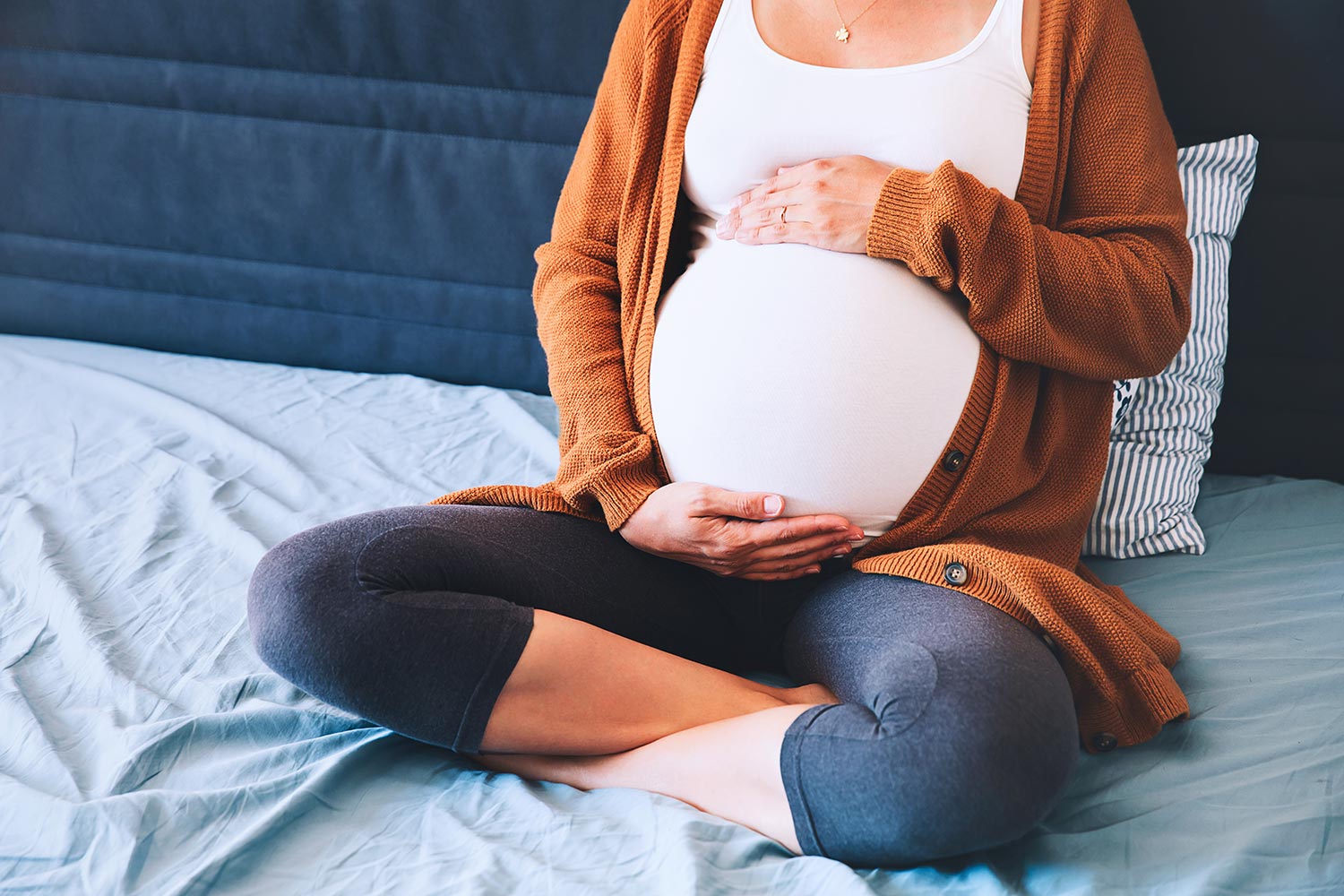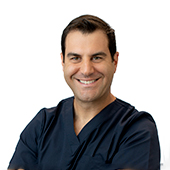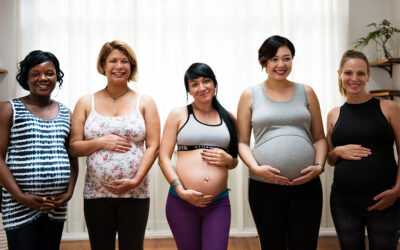Many women first notice varicose veins while pregnant and may experience symptoms like muscle cramps at night, heaviness in the legs, aching, swelling, pain, or even itching and dermatitis in the legs.
Under normal circumstances veins send blood in one direction – back to the heart and lungs to be oxygenated again. When the one-way valves inside the vein walls fail, blood leaks backwards. This is known as venous insufficiency. This pooling of the blood, in one section of the vein, causes the bulging veins you may see on the skin surface.
During pregnancy, extra pressure is placed on your pelvic veins by the baby, placenta, and uterus. This can aggravate existing, or produce new varicose veins. Pelvic veins lie within the walls of the uterus, the walls of the vagina and rectum and in the perineum (between the vagina and rectum). Pelvic veins will then put pressure on veins in the thighs and lower legs, and lead to severe symptoms/problems during pregnancy.
After pregnancy the pressure will be somewhat relieved, and symptoms may be decreased slightly, but varicose veins do not heal on their own. They will require medical intervention to restore circulation to normal.
Get Treated After Pregnancy
Phlebologists (doctor’s specialising in diagnosis and treatment of venous diseases, including varicose veins) recommend waiting to treat varicose veins between pregnancies to avoid complications during pregnancy such as; deep or superficial vein clots that can migrate to the lungs, and symptoms such as swelling, aching and pain, and leg rashes. Treatment during pregnancy is often not as effective as after the baby is delivered and pressure on the vein is relieved. However, veins that appear during pregnancy should be treated before the next pregnancy to avoid deterioration with subsequent pregnancies.
Relieve The Symptoms During Pregnancy
In the meantime, there are several things you can do to ease the symptoms of varicose veins: (remember to discuss these options with your treating phlebologist first)
- Wear compression stockings: wear class 2 compression stockings during the day. This will help compress your veins and help promote normal blood flow.
- Keep moving: avoid sitting or standing for long periods of time; move around at least once every hour or so.
- Put your feet up: if you sit at a desk all day at work, try elevating your legs by using a footstool.
All About Treatments
Modern medical treatments for varicose veins are effective and minimally-invasive. After pregnancy, your phlebologist will opt for the most appropriate treatment to suit your circumstances.
Medical adhesives are medical grade ‘glues’ which are used to seal off varicose veins. Once the interior of a varicose vein is glued closed, the vein will harden, heal and be absorbed into the body. Blood flow is automatically rerouted to healthy veins in the legs.
Ultrasound Guided Sclerotherapy (UGS) involves injecting a sclerosant solution into the abnormal veins under the guidance of ultrasound. The vein wall then collapses and veins dissolve and disappear as the body gradually absorbs them.
Endovenous Laser Ablation (EVLA) is done under ultrasound guidance, and places a laser fibre into the abnormal vein through a tiny incision. The laser is activated as the fibre is slowly removed. This produces a reaction in the vein wall along the treated section, resulting in collapse and sclerosis of the vein wall with minimal discomfort to the patient.
Find out more about treatments for varicose veins.
Key Takeaways
- Pregnancy can exacerbate existing- or produce new varicose veins because of the extra pressure placed on pelvic veins by your growing baby, placenta, and uterus.
- Phlebologists recommend having varicose veins treated between pregnancies to achieve the safest and most effective outcome.
- Common treatments for varicose veins include: medical adhesive closure, ultrasound guided therapy and endovenous laser ablation.






